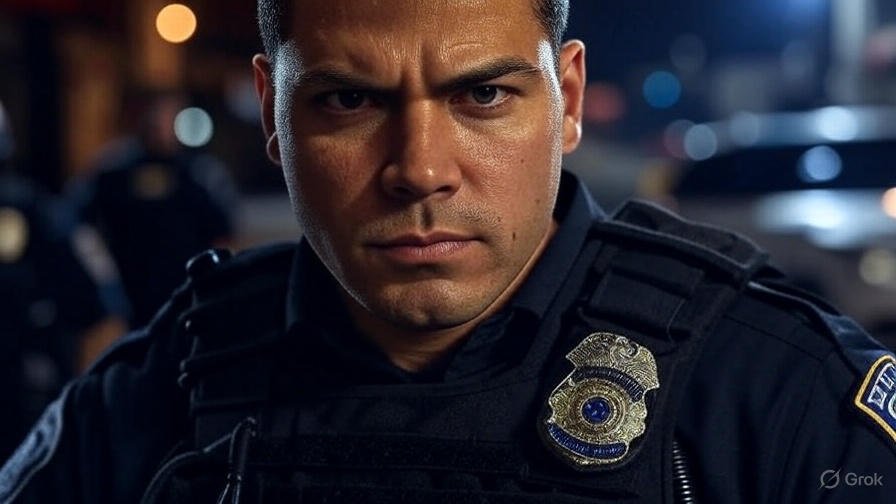Incidents involving individuals being police shot have dominated headlines, raising critical questions about law enforcement practices, public safety, and systemic reform. These events, often complex and emotionally charged, have sparked protests, policy debates, and calls for greater transparency. This article provides an in-depth analysis of recent police shot cases, their societal implications, and the path forward, drawing on expert insights and credible sources.
Greenfield Shooting: A Community in Mourning
In Greenfield, a recent police shot incident resulted in the death of a 32-year-old man during a traffic stop gone awry. According to a Greenfield News report, the individual was reportedly armed, leading to an officer-involved shooting. However, community advocates have questioned the proportionality of the response, citing a lack of body camera footage. This tragedy has fueled local demands for independent investigations and better de-escalation training, highlighting the broader issue of police shot incidents in urban settings. For more on community responses to such incidents, see this New York Times analysis on policing reforms.
Texas ICE Facility Attack: Officer Targeted
In Texas, a police officer was police shot outside an Immigration and Customs Enforcement (ICE) facility in a targeted attack. As reported by The Texas Tribune, the incident involved vandalism and gunfire from masked assailants, with eight suspects now in custody. This event has intensified discussions about officer safety and the politicization of federal facilities. The police shot scenario underscores the need for enhanced security protocols and community-law enforcement dialogue to prevent future violence.
International Case: Palestinian Grandmother’s Death
Globally, a police shot incident in Israel has drawn international scrutiny. Zahia Jawda, a 66-year-old Palestinian grandmother, was fatally shot while on her rooftop, as reported by Al Jazeera. Her family alleges the shooting was unprovoked, prompting accusations of excessive force by the Israeli Border Police. This case illustrates how police shot incidents resonate beyond borders, often tied to geopolitical tensions and human rights concerns. For further context on global policing issues, refer to this Guardian report on international law enforcement practices.
Societal Impact and Public Response
Each police shot incident reverberates through communities, amplifying calls for systemic change. In the U.S., organizations like the NAACP and Black Lives Matter have advocated for reforms to address racial disparities in policing, citing data from the Mapping Police Violence project, which tracks officer-involved shootings. In Greenfield, vigils and protests have demanded transparency, while the Texas incident has sparked debates about protecting law enforcement officers in high-risk environments.
Social media platforms, including X, have amplified public sentiment. Posts analyzed from X reveal a mix of outrage, calls for stricter gun laws, and demands for improved officer training. These discussions highlight the polarized views on police shot cases, with some defending officers’ actions and others criticizing systemic failures.
Policy Reforms and De-escalation Strategies
In response to these incidents, several cities are implementing reforms to reduce police shot scenarios. According to a Police Executive Research Forum report, de-escalation training has proven effective in reducing use-of-force incidents by up to 28%. Programs pairing mental health professionals with officers during crisis calls are also gaining traction. However, experts argue that broader systemic changes, such as revising use-of-force policies and increasing accountability, are essential for lasting impact.
The Role of Media in Shaping Narratives
Media coverage significantly influences public perception of police shot incidents. Balanced reporting, as seen in outlets like NPR, fosters constructive dialogue, while sensationalized headlines can exacerbate tensions. In the Greenfield case, local media has been commended for detailed reporting but criticized for not addressing systemic issues comprehensively. Similarly, international coverage of the Palestinian grandmother’s death has highlighted the need for nuanced reporting on complex conflicts.
Expert Insights and Path Forward
Dr. John Rivera, a criminal justice professor at the University of Maryland, emphasizes the need for community-based policing models. “Building trust requires consistent engagement, transparency, and accountability,” he notes. Rivera advocates for federal funding to support de-escalation training and mental health resources, which could reduce police shot incidents by addressing root causes like mental health crises and community mistrust.
Technological solutions, such as body-worn cameras and real-time data analytics, are also critical. A 2024 study by the Urban Institute found that body cameras reduced use-of-force incidents by 15% in departments with consistent usage policies. However, challenges remain, including ensuring footage accessibility and addressing privacy concerns.
Recommendations for Change
To address police shot incidents, stakeholders must prioritize:
- Transparency: Release body camera footage and incident reports promptly to build public trust.
- Training: Expand de-escalation and mental health training for officers.
- Community Engagement: Foster dialogue through town halls and community policing initiatives.
- Policy Reform: Revise use-of-force guidelines to prioritize non-lethal options.
Conclusion
The recent wave of police shot incidents, from Greenfield to Texas to Israel, underscores the urgent need for systemic reform. These tragedies highlight the delicate balance between officer safety and civilian rights, fueling demands for transparency, accountability, and innovative policing strategies. By leveraging expert insights, credible data, and community collaboration, society can work toward a future where police shot incidents are minimized, and trust between law enforcement and communities is strengthened.


